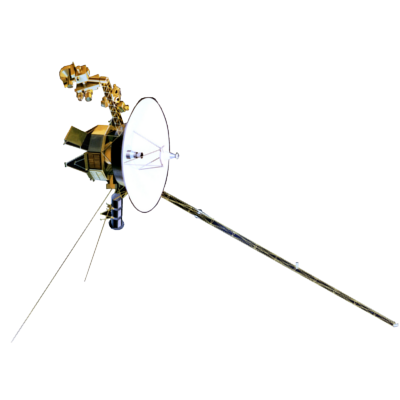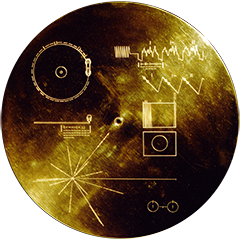Voyager LECP Data Analysis Handbook
Data File Descriptions
Master Rate (Tape) File Descriptions
Table 4 Explanation
of I*1 Representation
|
Bit 7 |
Bit 6 |
Bit 5 |
Bit 4 |
Bit 3 |
Bit 2 |
Bit 1 |
Bit 0 |
|
MSB |
|
|
|
|
|
|
LSB |
Table 5 Explanation
of I*2 Representation (VAX Fortran Volume 2 Language
Reference Manual C-1)
|
Bit 15 |
Bit 14 |
Bit 13 |
Bit 12 |
Bit 11 |
Bit 10 |
Bit 9 |
Bit 8 |
Bit 7 |
Bit 6 |
Bit 5 |
Bit 4 |
Bit 3 |
Bit 2 |
Bit 1 |
Bit 0 |
|
Sign |
MSB |
|
|
|
|
|
|
|
|
|
|
|
|
|
LSB |
Sign = 0(+), 1(-)
Integers are stored in a twos complement representation. INTEGER*2 values are in the range –32768 to 32767, and are stored in two contiguous bytes aligned on an arbitrary byte boundary. For example:
+22 = 0016 (hex)
-7 = FFF9 (hex)
Table 6 R*4
Representation (VAX Fortran Volume 2 Language Reference
Manual C-5 and User Manual 10.5.1.2)
|
Bit 15 |
Bit 14 |
Bit 13 |
Bit 12 |
Bit 11 |
Bit 10 |
Bit 9 |
Bit 8 |
Bit 7 |
Bit 6 |
Bit 5 |
Bit 4 |
Bit 3 |
Bit 2 |
Bit 1 |
Bit 0 |
|
Sign |
Exponent |
Fraction |
|||||||||||||
|
Fraction |
|||||||||||||||
|
Bit 31 |
Bit 30 |
Bit 29 |
Bit 28 |
Bit 27 |
Bit 26 |
Bit 25 |
Bit 24 |
Bit 23 |
Bit 22 |
Bit 21 |
Bit 20 |
Bit 19 |
Bit 18 |
Bit 17 |
Bit 16 |
Sign = 0(+), 1(-)
The exponent for the REAL*4 format is stored in binary excess 128 notation. Binary exponents from –127 to 127 are represented by the binary equivalents of 1 through 255.
For each floating-point format, fractions are represented in sign-magnitude notation, with the binary radix point to the left of the most significant bit. Fractions are assumed to be normalized, and therefore the most significant bit is not stored (this is called “hidden bit normalization”). This bit is assumed to be 1 unless the exponent is 0. If the exponent equals 0, then the value represented is either zero or it is a reserved operand. 0.0 is any bit patter that has an exponent field of 0 and a sign bit of 0 regardless of the value of the fraction.
REAL*4 (F_Floating) data is four continguous bytes starting on an arbitrary byte boundary. Bits are labeled from the right, 0 through 31. The form of REAL*4 (F-floating) data is sign magnitude, with bit 15 the sign bit, bits 14:7 an excess 128 binary exponent, and bits 6:0 and 31:16 a normalized 24 bit fraction with the redundant most significant fraction bit not represented. The value of F_floating data is in the approximate range 0.29 x 10-38 through 1.7 x 1038. The precision is approximately one part in 223; that is, typically, seven decimal digits.
Next: Record Structure
Return to MRT main page.
Return to Data File Descriptions main page.
Return to Voyager
LECP Data Analysis Handbook Table of Contents.
Return to Fundamental
Technologies Home Page.
Updated 8/9/19, Cameron Crane
VOYAGER 1 ELAPSED TIME
*Since official launch
September 5, 1977, 12:56:00:00 UTC
VOYAGER 2 ELAPSED TIME
*Since official launch
August 20, 1977, 14:29:00:00 UTC
QUICK FACTS
Mission Duration: 40+ years have elapsed for both Voyager 1 and Voyager 2 (both are ongoing).
Destination: Their original destinations were Saturn and Jupiter. Their current destination is interstellar space.



